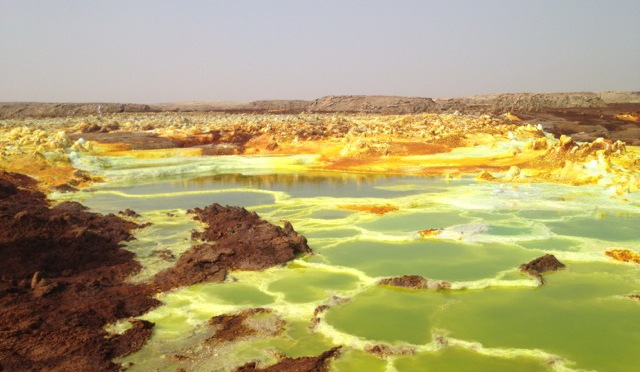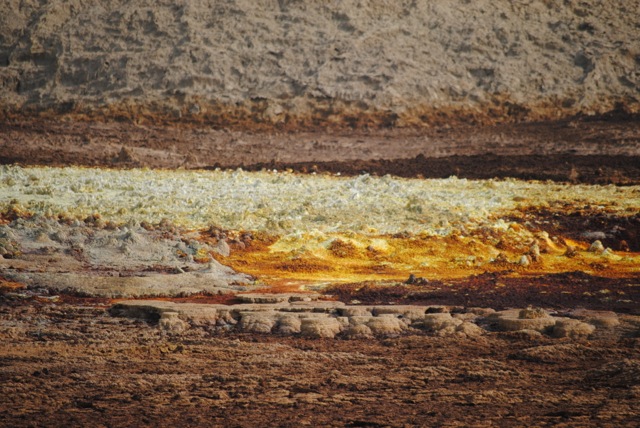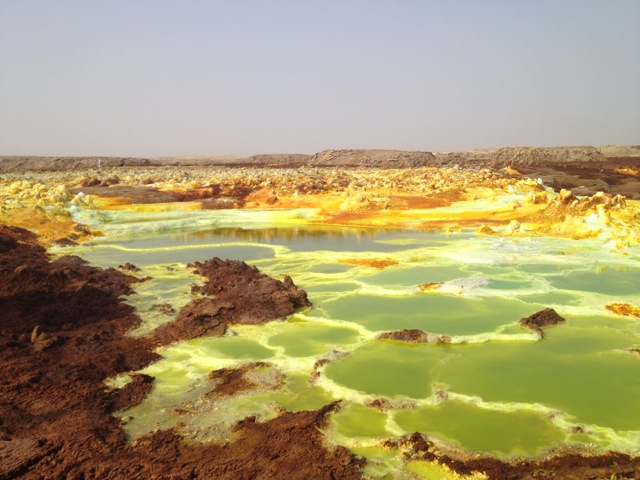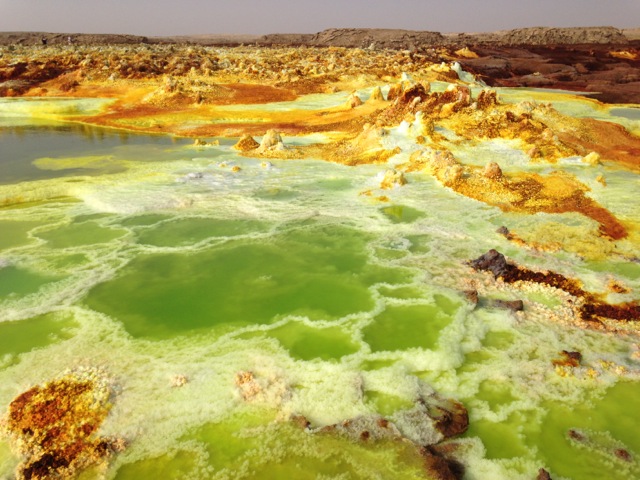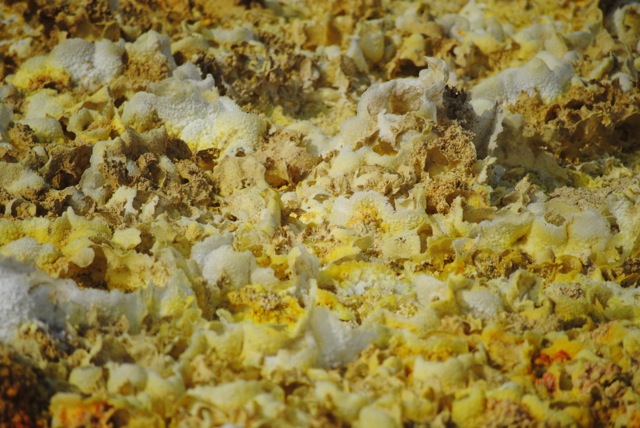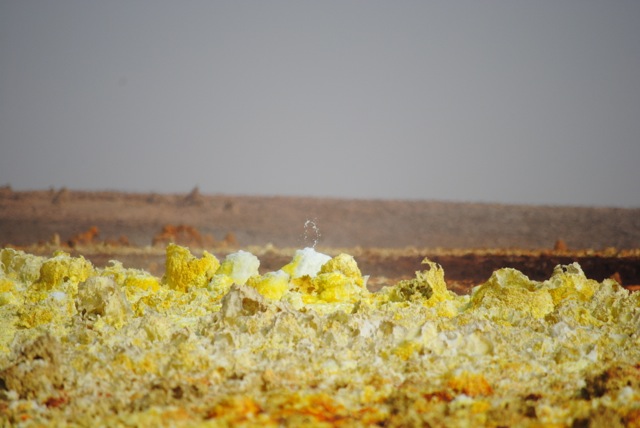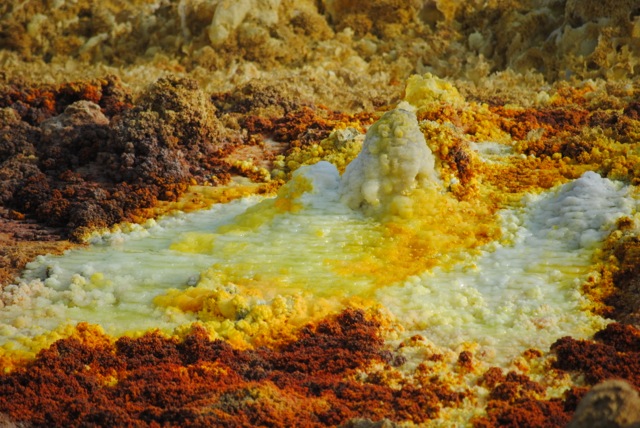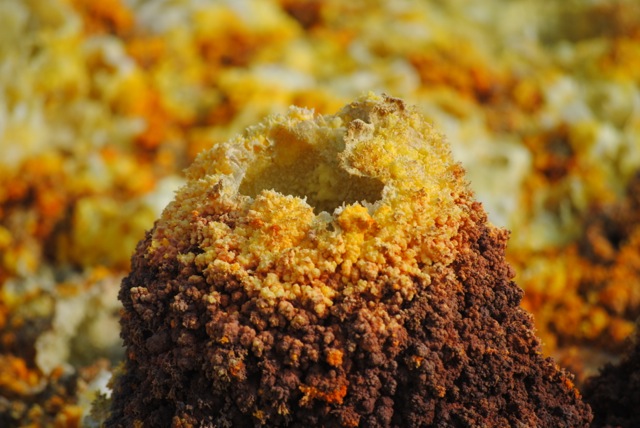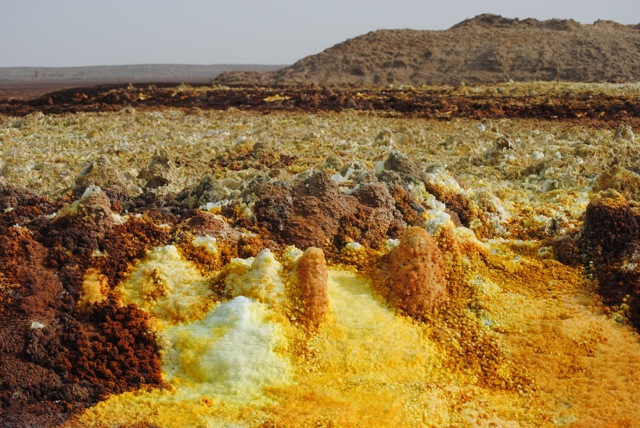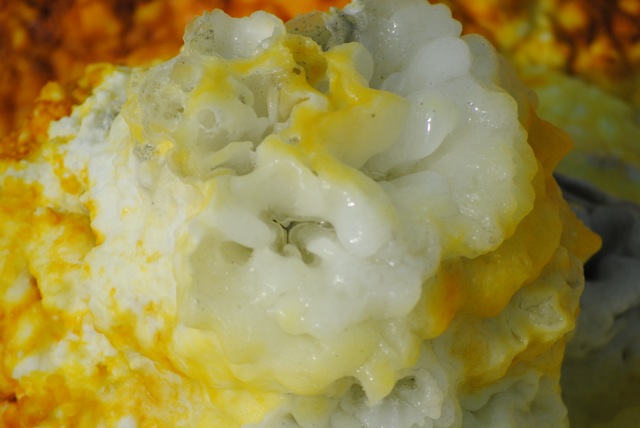In an effort to beat the heat, we awoke on our string beds around 5:30 a.m. and set off for our final day of sightseeing in the Danakil Depression. On our way through the salt flats, we paused to watch a pair of salt miners work. They pick squares of salt off the ground (yes, off the ground – it’s just sitting there) and hack them into the appropriate shapes, then load them onto camel caravans for transportation to the salt market in Berhale. It seems like a hard way to make a living, mining for salt in such an inhospitable place.1
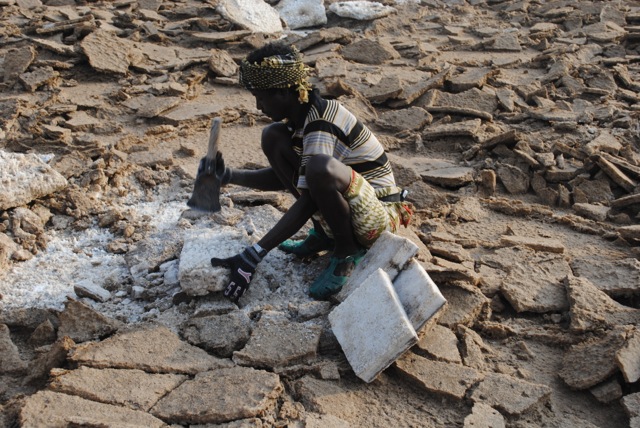
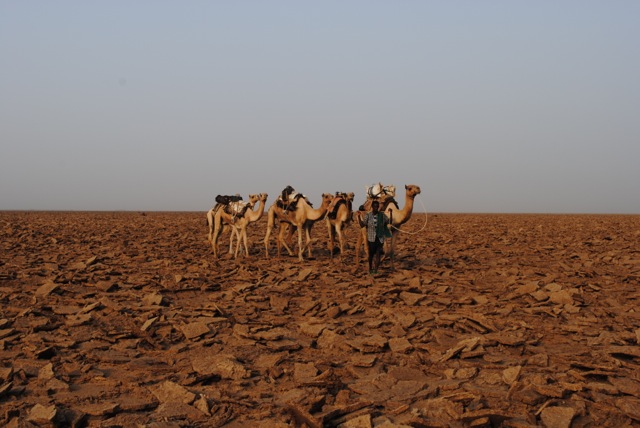
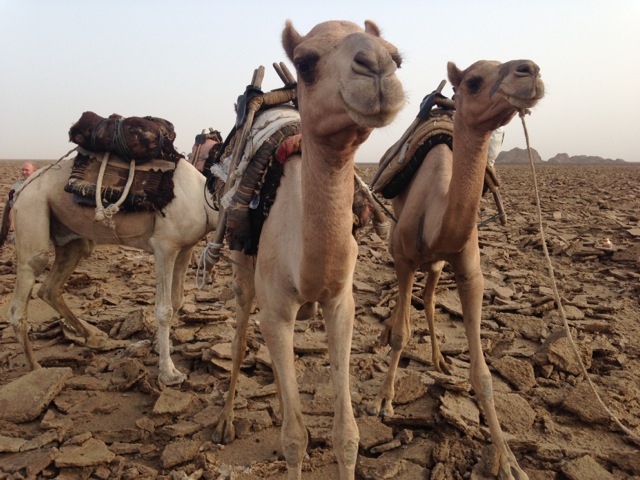
Then we made our way to the Dallol crater, where the lowest known subaerial volcano vents in the world are located. Our guide referred to the area as the “Colorful Forest,” but we didn’t see much color when we arrived.
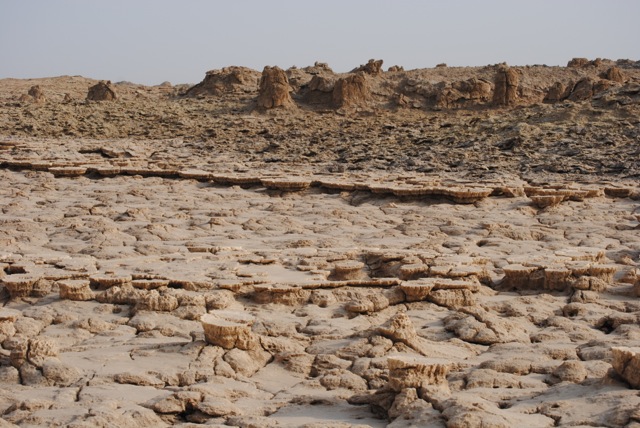
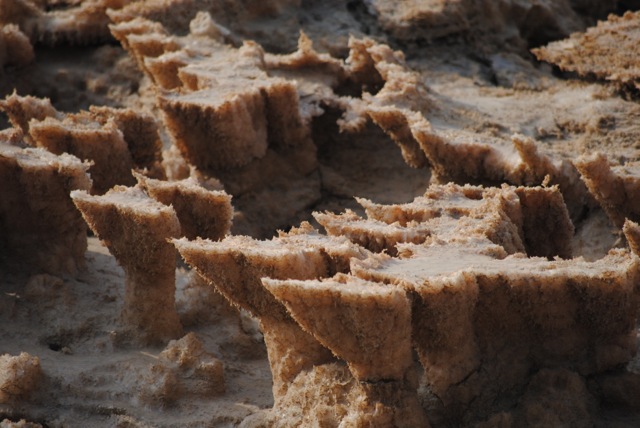
We had to hike a bit, fighting heat and air thick with the stinging stench of sulfur, before we finally made it to the colors. And, wow, were those colors amazing. The landscape, which is composed of acid ponds, iron oxide, sulfur, and salt desert plains, is entirely other-worldly. Even now, as I’m looking at these pictures that we took, I’m finding it hard to believe that such a place exists in real life. Check it out:
When we finally tore ourselves away from Dallol, we stopped at a nearby cave. As you might remember, I am not much of a cave person. Thankfully, the enclosed portion of this cave was only several meters long.
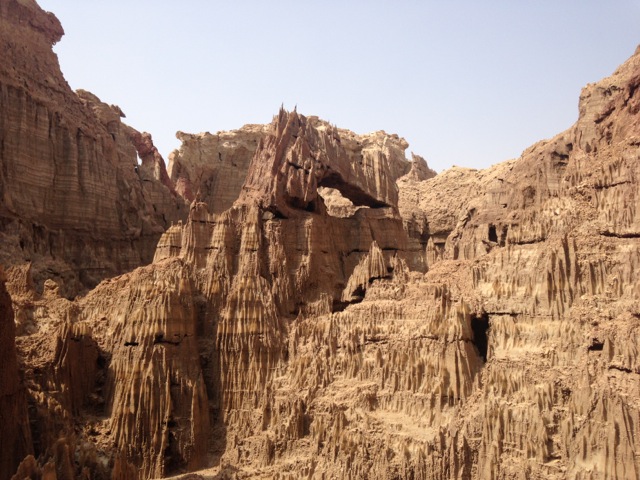
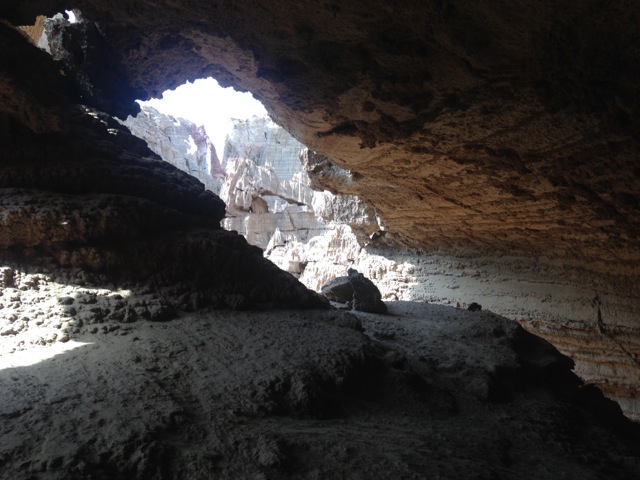
Our final stop was at a series of bubbling sulfur springs. Our guide described how the water, although poisonous for consumption, can reputedly heal skin conditions. (You can judge for yourself, but we gave the topical application a miss.)
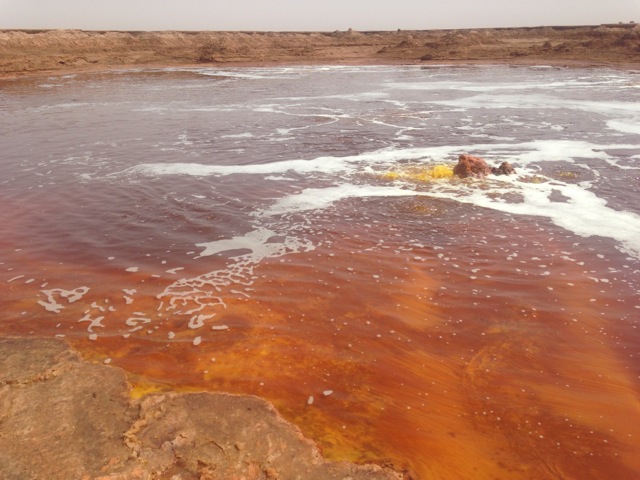
We once again stopped in Berhale for lunch, but, since we were just heading back to Mekele, we didn’t have to sit around to wait out the heat before continuing. (Just as well, since there were no markets to entertain us that day.) As we climbed out of the Danakil towards the higher elevation of the rainy mountains surrounding Mekele, we watched as the outside temperature made an incredible drop from 45°C/113°F to 10°C/50°F. In only a matter of hours, and over a distance of little over 100 kilometers, we had gone from scorching heat to drizzling cold.
Once in Mekele, we splashed out for accommodation in a new, posh hotel. After the last three nights – sleeping on the side of a volcano, on the floor in a room with 16 other people, and on a string bed underneath the stars in the hottest place in the world – our hotel room felt unbelievably luxurious. Because it was our friend’s birthday, we celebrated with dinner and delicious cake in the hotel’s restaurant. It was a lovely end to a fascinating tour.
Where We Stayed:
☆ Planet Hotel. Five goats. All this place needed to make me happy was a bed and a shower, and it had a really nice bed and a really nice shower. Our room was also just about as big as our entire apartment back in Brooklyn, so there’s that. I probably don’t have to say this, but it was heads and shoulders above our other accommodation in Mekele, the Rat Hotel.
1 For more background on these salt-trading camel caravans, check out this great article from the October 2005 issue of National Geographic.

